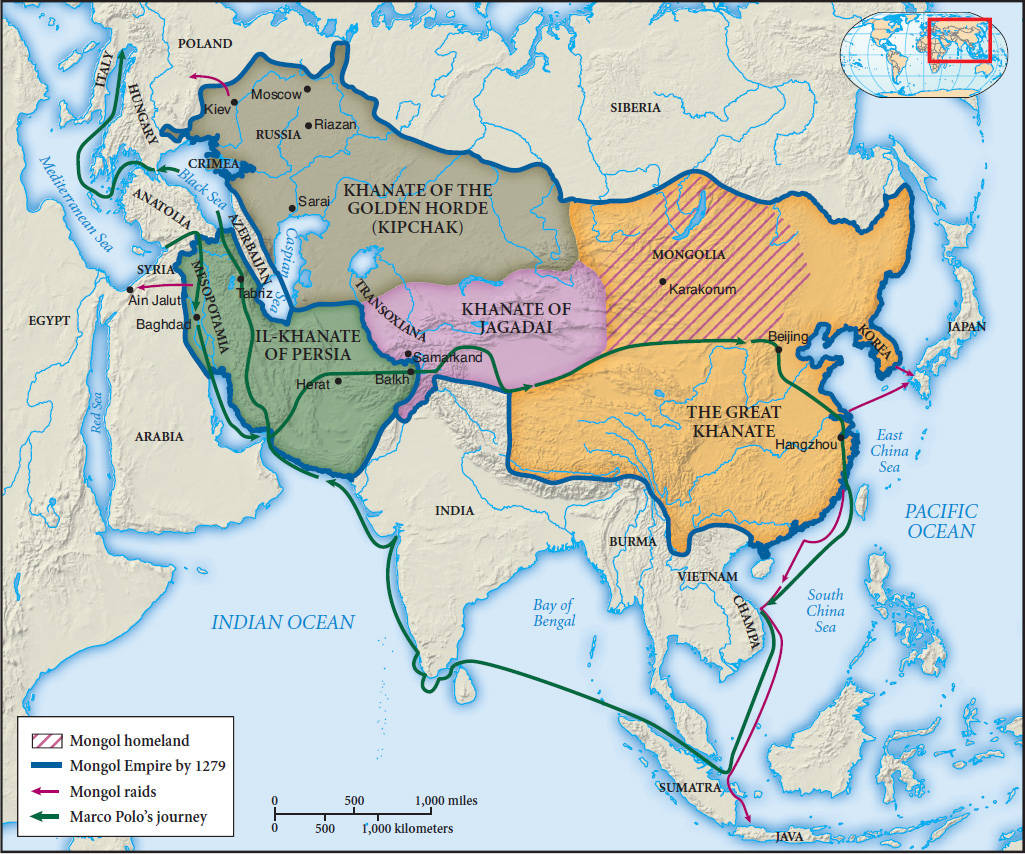Breakout: The Mongol Empire
Of all the pastoral peoples who took a turn on the stage of world history, the Mongols made the most stunning entry. Their thirteenth-century breakout from Mongolia gave rise to the largest land-based empire in all of human history, stretching from the Pacific coast of Asia to Eastern Europe (see Map 11.1). This empire joined the nomadic peoples of the inner Eurasian steppes with the settled agricultural civilizations of outer Eurasia more extensively and more intimately than ever before. It also brought the major civilizations of Eurasia—Europe, China, and the Islamic world—into far more direct contact than in earlier times. Both the enormous destructiveness of the process and the networks of exchange and communication that it spawned were the work of the Mongols, numbering only about 700,000 people. It was another of history’s unlikely twists.

For all of its size and fearsome reputation, the Mongol Empire left a surprisingly modest cultural imprint on the world it had briefly governed. Unlike the Arabs, the Mongols bequeathed to the world no new language, religion, or civilization. Whereas Islam offered a common religious home for all converts—conquerors and conquered alike—the Mongols never tried to spread their own faith among subject peoples. Their religion centered on rituals invoking the ancestors, which were performed around the family hearth. Rulers sometimes consulted religious specialists, known as shamans, who might predict the future, offer sacrifices, and communicate with the spirit world, and particularly with Tengri, the supreme sky god of the Mongols. There was little in this tradition to attract outsiders, and in any event the Mongols proved uninterested in religious imperialism.
The Mongols offered the majority of those they conquered little more than the status of defeated, subordinate, and exploited people, although people with skills were put to work in ways useful to Mongol authorities. Unlike the Turks, whose languages and culture flourish today in many places far from the Turkic homeland, Mongol culture remains confined largely to Mongolia. Furthermore, the Mongol Empire, following in the tradition of Xiongnu and Turkic state building, proved to be “the last, spectacular bloom of pastoral power in Inner Eurasia.”10 Some Mongols themselves became absorbed into the settled societies they conquered. After the decline and disintegration of the Mongol Empire, the tide turned against the pastoralists of inner Eurasia, who were increasingly swallowed up in the expanding Russian or Chinese empires. Nonetheless, while it lasted and for a few centuries thereafter, the Mongol Empire exercised an enormous impact throughout the entire Eurasian world.